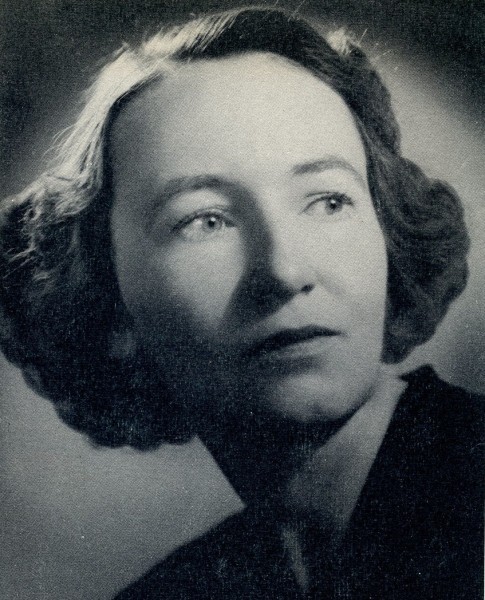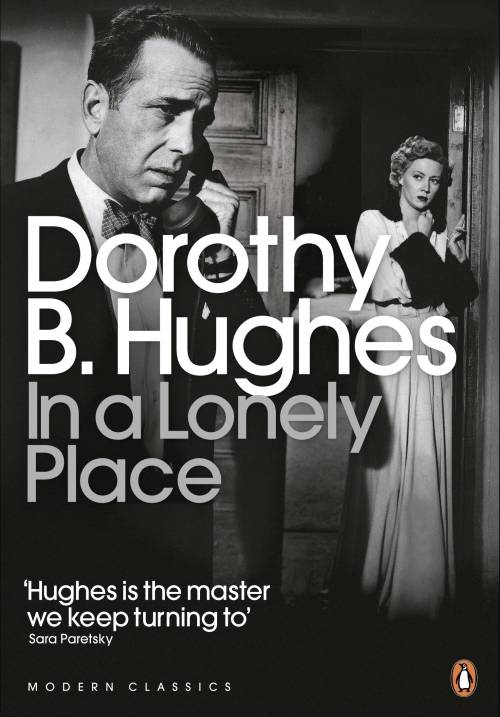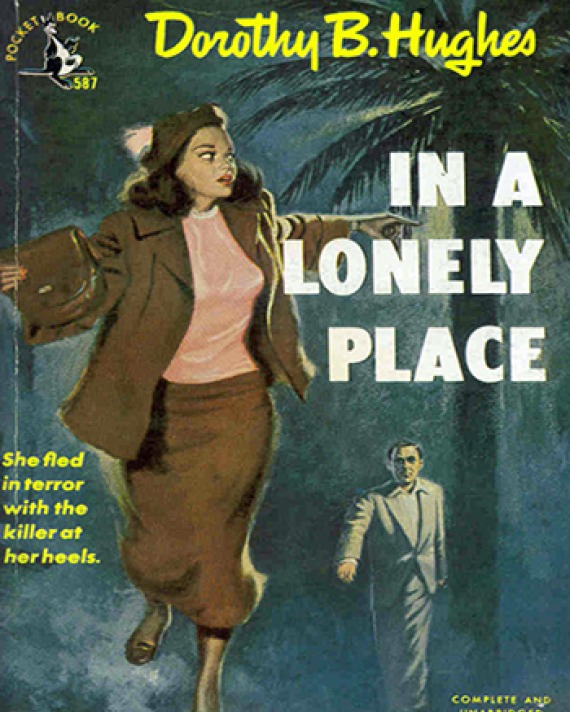In a Lonely Place by Dorothy B. Hughes
Review by Rose
‘He’s insane, of course’. It would never occur to him that any reason other than insanity could make a man a killer. That’s what all the dolts around town would be parroting: ‘he’s insane of course, he’s insane of course’. It took imagination to think of a man, sane as you or I, who killed.’
 The Los Angeles environment is a crucial feature of this story. Dorothy Hughes’s fervent depictions of the metropolis elevate this merciless thriller, strengthening the prevailing mood and emotions of the main characters. A familiar concept to Dorothy Hughes’s thrillers was that evil walks amongst us, yet it is always carefully masked: like the Los Angeles fog, she describes ‘In a lonely place’ that prevents inhabitants from seeing too far ahead, that obscures reality. Killers in her novels, often cultivate a normal façade, camouflaging their savagery. In only a few brief lines, Hughes deftly reveals the thinking of her characters. It’s a fast-paced read and a short novel, with a gripping rhythm infused with the atmosphere of the urban landscape.
The Los Angeles environment is a crucial feature of this story. Dorothy Hughes’s fervent depictions of the metropolis elevate this merciless thriller, strengthening the prevailing mood and emotions of the main characters. A familiar concept to Dorothy Hughes’s thrillers was that evil walks amongst us, yet it is always carefully masked: like the Los Angeles fog, she describes ‘In a lonely place’ that prevents inhabitants from seeing too far ahead, that obscures reality. Killers in her novels, often cultivate a normal façade, camouflaging their savagery. In only a few brief lines, Hughes deftly reveals the thinking of her characters. It’s a fast-paced read and a short novel, with a gripping rhythm infused with the atmosphere of the urban landscape.
The antagonist, an ex-serviceman, Dickson Steele, is drawn instinctively to the natural features of Los Angeles: the sea and sandy beaches. He hunts his prey, vulnerable females, in the late evening when only a few people dot the streets and the sounds of the ocean penetrate his mind. The sea is a dramatic hypnotic presence in this story of a killer terrorising the wide twisting streets of Los Angeles. The watery depths that he is constantly drawn to, prompt memories of the times when he soared through skies during wartime, describing himself as being lifted high above the crawling earth, the only time he truly felt comfortable in life.
He states that ‘It wasn’t often he could capture any part of that feeling of power and exhilaration and freedom that came with loneness in the sky.’ That expansive sky, with giant billowing clouds, where no buildings or people exist, far apart from the demands and rules of society and the speed of civilisation. This is a time where Steele had once been in charge as a pilot, in contrast to the society he returns to after military service, a jobless, penniless man, relying on a miserly uncle he hates for hand-outs. One could say that the dramatic changes in the movement of the sea in this novel mimic the killer’s mood swings, his tendency to shift emotional tempo from calm, confident, depressed to rageful. He describes the sea as restless, dark and powerful tempestuous entity. The sound of the sea is both romanticised and depicted as destructive in other scenes.
 New to the city, Steele observes an artificial appearance of the inner metropolis, commenting that Los Angeles feels ‘unreal’ that the whole urban sprawl is theatrical, a built stage set, where spotlights adorn a flawlessly coloured blue pool, situated in luxurious apartment buildings that no one swims in. The city is quickly divided up into sections of the wealthy and the working class, illustrating the immense difference between freedom, health and the social classes. The unfairness of the distribution of wealth and disparities in early caregiving are dominant. The power of one human being capable of bringing an entire city to its knees, creating long-standing trauma to a large group of people is a potent subject. The minds of the urbanites are invaded by the killers slaughters and their behaviour begins to change, fear permeates the landscape and weary Detectives haunt the places of the killings desperate for clues, struggling to comprehend the mind of a man without a conscience. A Detective tells Steele that the killer is both insane and unable to stop himself, that killing is an addiction. Steele, the killer, sits on the opposite side of the table, bemused by this analysis of his mind and enjoying the game.
New to the city, Steele observes an artificial appearance of the inner metropolis, commenting that Los Angeles feels ‘unreal’ that the whole urban sprawl is theatrical, a built stage set, where spotlights adorn a flawlessly coloured blue pool, situated in luxurious apartment buildings that no one swims in. The city is quickly divided up into sections of the wealthy and the working class, illustrating the immense difference between freedom, health and the social classes. The unfairness of the distribution of wealth and disparities in early caregiving are dominant. The power of one human being capable of bringing an entire city to its knees, creating long-standing trauma to a large group of people is a potent subject. The minds of the urbanites are invaded by the killers slaughters and their behaviour begins to change, fear permeates the landscape and weary Detectives haunt the places of the killings desperate for clues, struggling to comprehend the mind of a man without a conscience. A Detective tells Steele that the killer is both insane and unable to stop himself, that killing is an addiction. Steele, the killer, sits on the opposite side of the table, bemused by this analysis of his mind and enjoying the game.
All the murdered girls die in lonely places, the fog and mist aiding him in his murderous quest. He is a night stalker, trekking through the city during its isolated moments, those times when his victims are vulnerable and the city is beginning to close all its doors, he preys on the secluded and the forlorn. Loneliness is something that he lives daily, loneliness is his preys weakness, lonely places are where he hunts and kills.
The creation of the killer is adept and Hughes permits us to see the world through the killer’s mind with intensity and depravity that is unsettling. At times it is as though the killer were talking to the reader, casually and clinically positioning his perverted viewpoints and inviting you to agree with him. We are presented with the icy depths of a void, a man that has a black hole carved right through his brain. Hughes is not afraid of entering the most damaging psyche, studying that personality, and constructing a primal image of human evil. Steele is arrogant and makes persistent misogynistic statements throughout the story. He views his victims as objects, he perceives females as interfering, nosy, gossipy machines, bitches or whores, women that smile and are polite to your face, but gossip behind your back.
Memory is well applied in this narrative; the killer recollects past moments frequently traumatic ones, that impact his present time and behaviour. With the mention of certain people or experiences, he has symptoms of unbearable depression that debilitate him. He views his memories as time-coded, though events from the past are processed by him as much lengthier than the reality, which affects the way he views himself and events occurring around him. It also seems to be a coping mechanism. Making the bad experiences seem more distant.
We see his friend from the War, living comfortably with a wife, his family were rich and although he chose a low-wage detective position, they attend a club where the wealthy hang out. This difference in social class and how some are accepted into environments excluding others is a common theme. The only female Steele wants a relationship with, a very attractive, openly selfish girl, who talks about hating the ‘rich bastards’ that get everything. She shares a few personality traits with him, they don’t’ care about anyone else, as long as they get what they want. However, this cut-throat attitude seems to have developed from miserable depressing life experiences in society within the class system and the military. Military men pushed to cope alone after serving during war-time is another subject that is in this novel. We never find out whether events in the war magnified his mental illness, just that he's struggling to feel apart of society. We do know that he was trained to kill in a certain way and kills all the women the way he was trained as a military man.
 The novel has the tone of a film noir, the over melodramatic descriptions are my only criticism, yet they do not diminish the cleverness of this thriller, and possibly only indicate the culture and way in which mysteries and thrillers were written in the 1940s. I didn’t like the last page but understand that in those days, one had to resolve dark stories like this quickly, without too many complications.
The novel has the tone of a film noir, the over melodramatic descriptions are my only criticism, yet they do not diminish the cleverness of this thriller, and possibly only indicate the culture and way in which mysteries and thrillers were written in the 1940s. I didn’t like the last page but understand that in those days, one had to resolve dark stories like this quickly, without too many complications.
Themes are psychopathy, misogynistic males, the treatment of ex-servicemen in society, social class divides, early caregiving difficulties and their effects on mental health and long-term success.